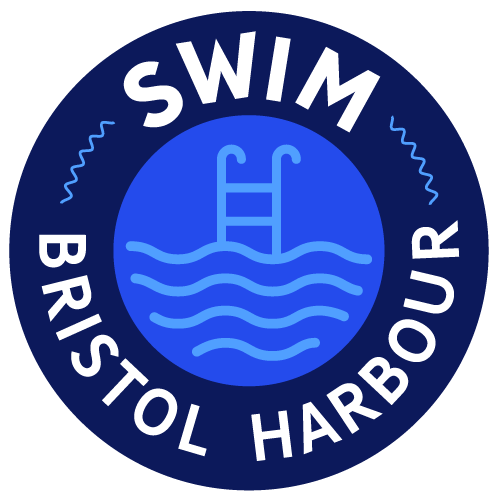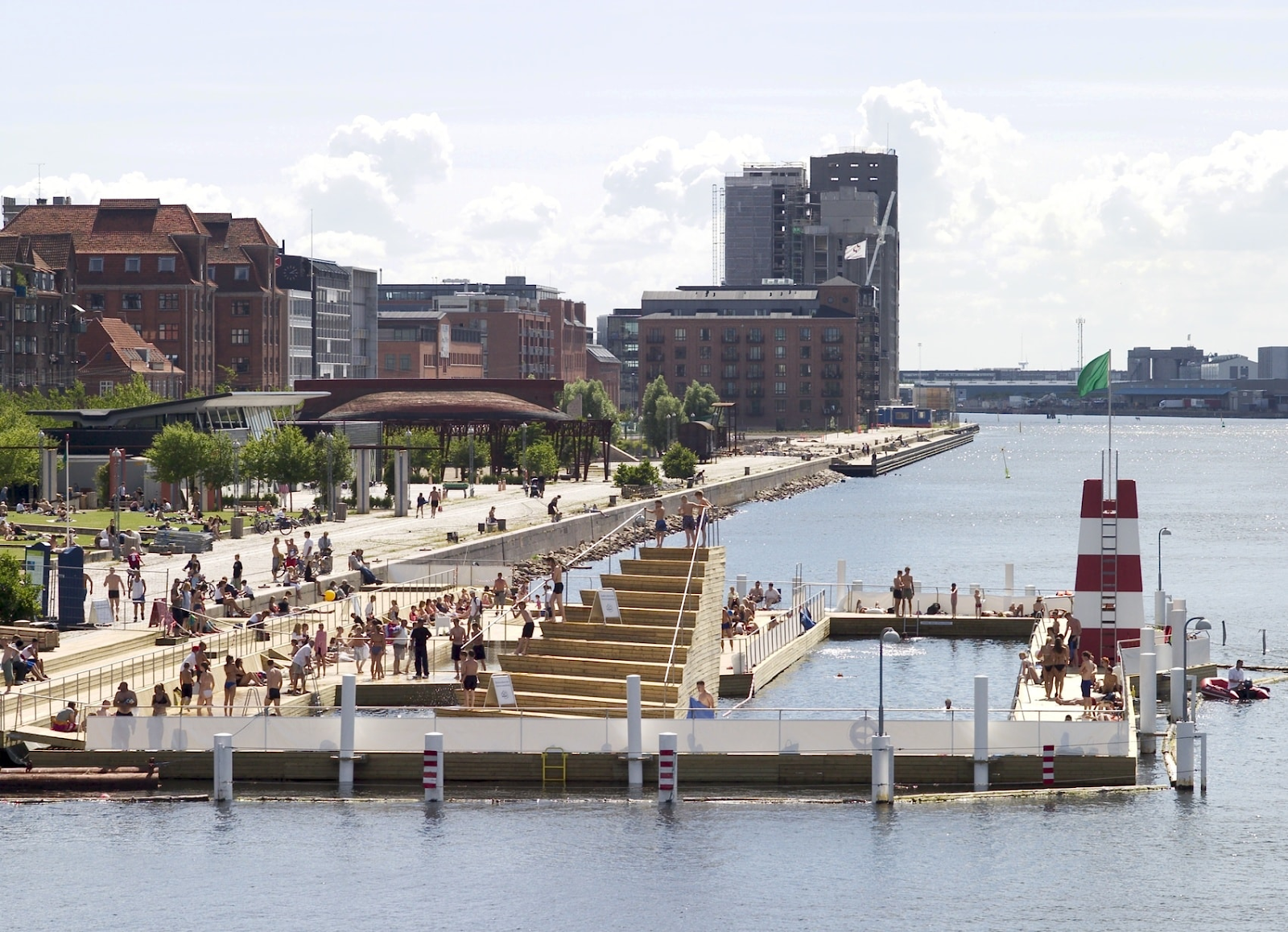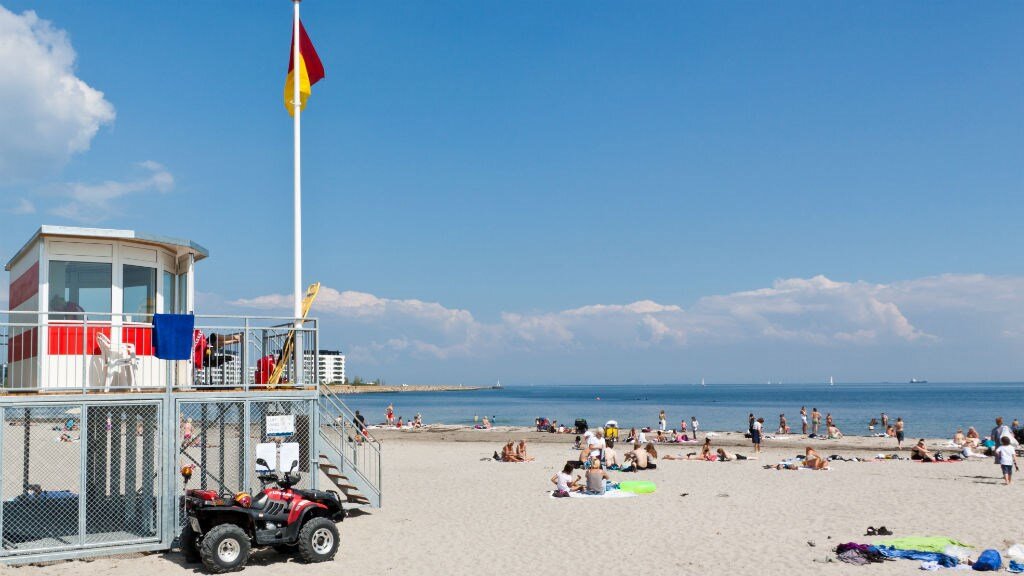The Copenhagen Model
Copenham, Denmark, has four floating harbour baths along its waterfront. As put by their website “with a harbour clean enough to swim in it, public harbour baths are something that just needed to happen”. And that’s how we feel too.
The water has been cleaned and is monitored regularly, and the results are reported on a publicly available app. In the event of heavy rain, the water is tested for E. Coli, and if necessary, the baths are closed until they are deemed safe again.
Islands Brygge Harbour Bath
Island Brygge opened to the public in 2002 and is the most visited of all Copenhagen’s harbour baths. Situated just a short hop over a bridge from the centre of the city, it consists of a 75m swimming pool, a diving pool, a children’s pool as well as a paddling pool. It runs alongside popular cafes, restaurants, and ice cream parlours, food from which can be enjoyed on the well-kept lawns popular with sunbathers and picnickers.
The site is open from May to September and is patrolled by lifeguards.
Copencabana
Also known as Havnebadet Fisketorvet, Copencabana lies next to the shopping centre. It is made of three pools- one for diving, one for children, and one for swimming. It has three pools- children, swimming, and a diving pool complete with diving boards.
Svanemølle Beach
Svanemølle Beach is a 4,000sqm beach, with a 120m pier, built in the Østerbro district in 2010. Also staffed with lifeguards, its waters are low and family-friendly, with the pier providing access to deeper swimming water.
Sluseholmen
Sluseholmen Harbour Bath is the smallest of the four, with four pools within a protective lagoon- one for children, one for youth, and one for exercise and diving. It is also served by a lifeguard and admission is free.
Why is this relevant?
Copenhagen is renowned for being the best city for swimmers. It attracts tourists and further elevates its green credentials. Bristol has always been similarly keen to prove itself at the forefront of climate change action. In 2015, Bristol was named the European Green Capital, the first in the UK, just a year after the title was awarded to Copenhagen. Millions of pounds have been invested into green infrastructure- transport improvements, emissions reductions, and improving energy efficiency. In fact, the jury stated, "Bristol is an innovator in terms of the green economy, with a powerful communication strategy and the commitment and enthusiasm required to develop its role as a model for Europe". The question really should be, not should we have a swimmable harbour, but why has this not been done before?
But what about drowning?
In 2018, Copenhagen reported the most incidents of drowning- 39. While this is tragic, it does provide some useful information for countries wishing to replicate the city-beach. Of that 39, 31 were males over 40. The verdict drawn was that these incidents were caused by competent swimmers swimming far out into deeper and more dangerous water. Therefore, when looking to create a public space in Bristol, we can understand that establishing clear and safe boundaries can mitigate a large percentage of these incidents.
According to figures reported by the Royal Life Saving service, a quarter of the 31 deaths by drowning in Bristol between 2012 and 2017 occurred at the harbour. These incidents have various causes, including car crashes, flooding, and alcohol. It is undeniable that bars and clubs around the harbour see large numbers of intoxicated people around the water. Our hope is that by creating a swimming space in the centre of the city, we can also increase education around safety, and foster a population that has respect for the water and is able to enjoy it responsibly.
What can we take from this?
Copenghagen has shown that a swimmable harbour is perfectly possible. We can copy many aspects in our own city. For example, building some sort of barrier to distinguish a swimming area from boat traffic and including separate areas for children, long distance swimming, and recreation. We could also look at lifeguards, either employed by BCC or on a volunteer basis. We could similarly look at an app that would communicate water conditions- this would be useful for those who already use the harbour recreationally, such as canoeing and paddle boarders.
There are also other things used by other locations that we can look at employing. Clevedon Marine lake is free and run by volunteers, but they request donations and offer memberships which fund cleaning and dredging. Henleaze lake charges an annual membership and users must pass a test that proves they are able to swim 50m. Other local swim lakes request that swimmers use tow floats to ensure they are visible.
We have lots of options, all of which can help make swimming in the harbour safe and enjoyable.






